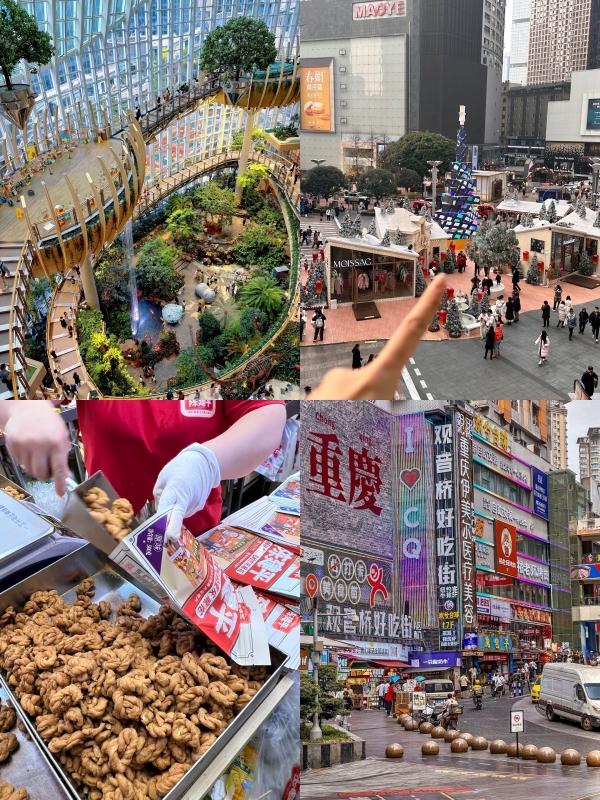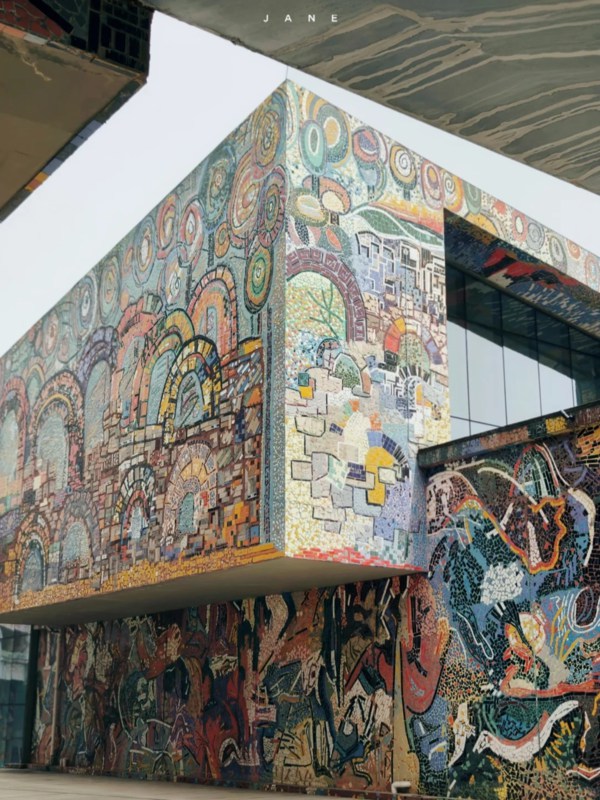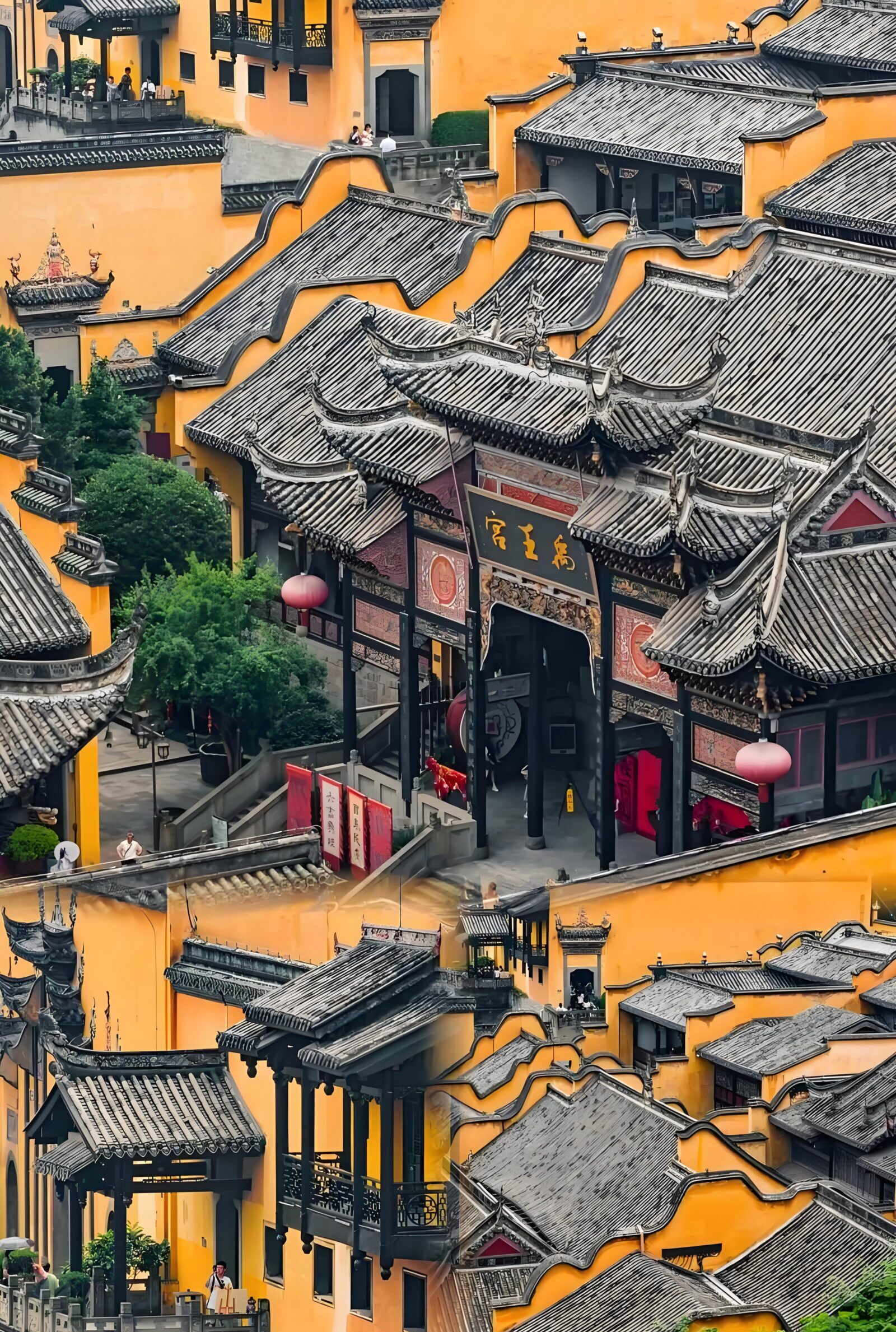Walking through a chongqing temple feels like carrying the whole city in your pocket. Some cities simply keep temples as landmarks, but here they seem to breathe with the hills, wear the morning mist, and move to the city’s stubborn rhythm. I’ve stepped from the gold glow of a crowded main hall straight into the cool shade of a courtyard no guidebook mentions, each space with its own voice. This journey will take you into three very different temples—Luohan, Huayan, and Ciyun.
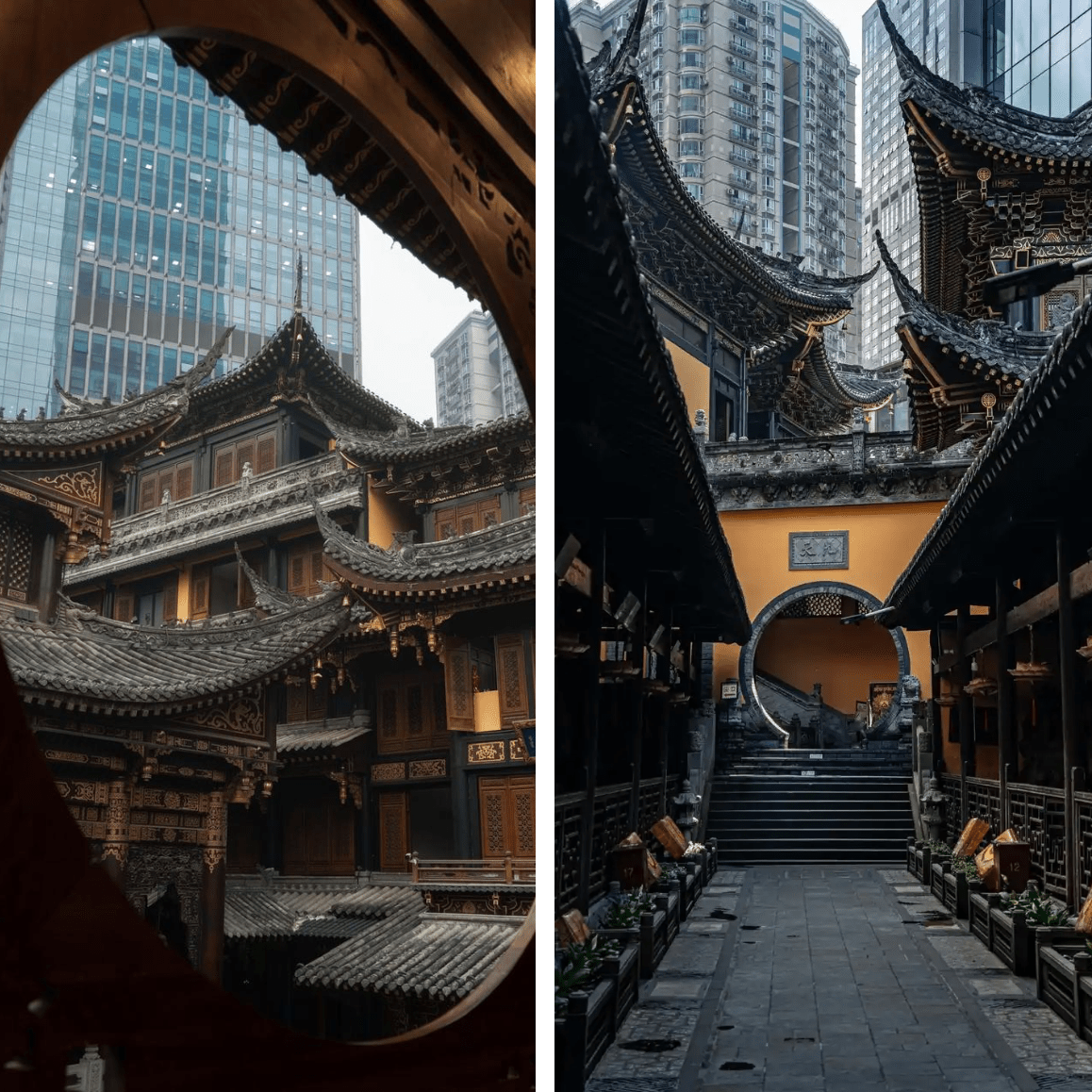
Why Are Chongqing Temples So Unique
Mountain City and Buddhist Calm
The three temples of Chongqing We'll start with the ‘Mountain City and Buddhist Calm' Mountain city grand and Buddhist calm. A temple in Chongqing is not approached in the same manner as those located on flat land. Most paths to these structures are steep steps, a bit slippery underfoot from years of rain and drizzled with mountain dew. At some point ahead you see wood entryways emerge through mist; although if you listen carefully- through the intoxicating din overhead- faintly Jing sound temple bell rings out.
The courtyard goes into the hillside on all sides, feeling much as if it were part of a mountain itself. I remember standing by a stone railing there and looking down onto ranks of tile roofs that seemed to go on indefinitely, with the Jialing River resting deep beneath morning fog. It didn't feel so much like going to look at some tourist attraction then, but rather being sucked into some quiet corner of the city which refuses to hurry or move.
History from Tang to Qing
Some Chongqing temples are like layered time capsules. Den, look up at the main hall of a Tang-style roof curve, and then down at the stone base. Although to prevent War and the Water didn't leave them entirely untouched, many halls have been restored after damage, incense meantime has never stopped.
Buddhist culture came here from the Song period, blending with our mountain city's merchant life. Monks copied scriptures while boats full of tea and silk continued to come ashore nearby. In the Qing, major restorations added bright new wall paintings and bell towers. Even today some walls show the only faint scars from past wars. Standing there, I thought hard how each dynasty leaves a small fingerprint – not always to be seen, but feeling it in the bone, especially with cold wind blowing through the hall that both brings dust and a hint of burning sandalwood.
Luohan Temple (罗汉寺)– Is This the Most Surreal Chongqing Temple
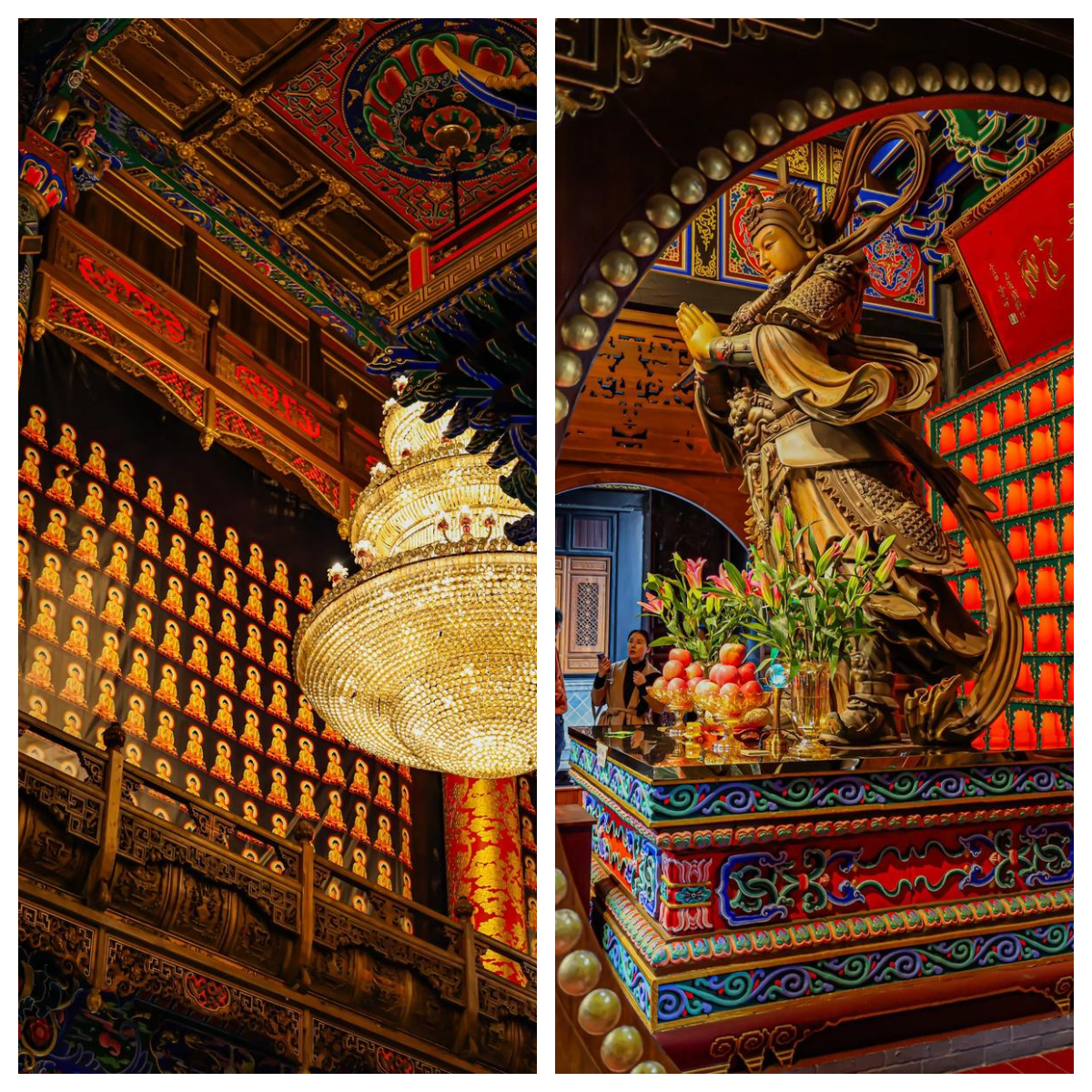
Inside Luohan Temple
The 500 Arhats You Can’t Forget
Step into the temple, the light slightly changed and the air seems heavier, holding its breath.Inside the Arhat Hall, hundreds of clay figures tower over your head, each one petrified mid-gesture. Sometimes one looks at you with eight eyes, another tears open his chest, and a few others one can say laughingly.
Anyway, the narrow paths push you back and forth until you have to look over your shoulder. The painted robes are fading, but still their expressions are sharp. Some betray amusement, while others seem almost annoyed with the reader for disturbing their eternal conversation.
The hall feels like a labyrinth – you keep turning, half expecting to wind up where you started out. Without a camera, it's not possible here to take rapid shots.
You are left with an odd feeling of being watched. The arhats continue to stare at you.
From Zhiping to Luohan – A Thousand-Year Journey
Chongqing's story begins with temple. The story of this Luohan temple begins in the Northern Song. Back then it was called Zhiping Temple, and was built on a stone road innkeep long outgrown by the era. Over centuries, fires, wars and floods attempted to obliterate it; yet each time it reappeared once more through the dust.
At that time, in 1752, restoring the temple was its Arhat Hall gives bearing to its present name: Qiantong Temple. Original Qing craftsmanship can still be recognized in its carved beams and painted ceilings, although the colours have become softer because of the years. During the war years it provided a silent retreat, sheltering monks and ordinary people alike.
Walking through here now is like walking through those annals. The ground beneath feels more worn out than any place can possibly survive for a thousand years. The very air even seems to have picked up some of the weight from all those kinds of prayer that were mumbled here – except that long before these towering skyscrapers were built it was nothing but fields and hills.
Photography Rules and Respectful Visiting Tips
Unlike many tourist spots, this Chongqing temple has strict rules on photography. Inside the Arhat Hall, cameras are off-limits—not just for preservation, but to keep the atmosphere intact. Without the constant click of shutters, the space feels heavier, more personal.
If you go, plan your visit early in the morning or just before closing. Crowds thin out, incense hangs in the air, and you can hear the soft tap of a monk’s wooden fish from across the courtyard. On the first and fifteenth days of the lunar month, the temple is busier with ceremonies, so expect longer lines.
Dress simply, cover shoulders, and move slowly through the halls. Donations are welcome, but a quiet bow says as much as a coin. In a place that has stood for a thousand years, your respect matters more than your camera roll.
Opening hours: 8:30 AM – 6:00 PM. Religious activities are held on the 1st and 15th days of the lunar month, as well as on Buddhist festivals.
Getting there: Take trolleybus No. 4015 or buses No. 103, 104, 105, 111, 112, 122, or the No. 105 sightseeing (outer loop) bus.
Huayan Temple (华岩寺)– A Spiritual Hub in the West of Chongqing
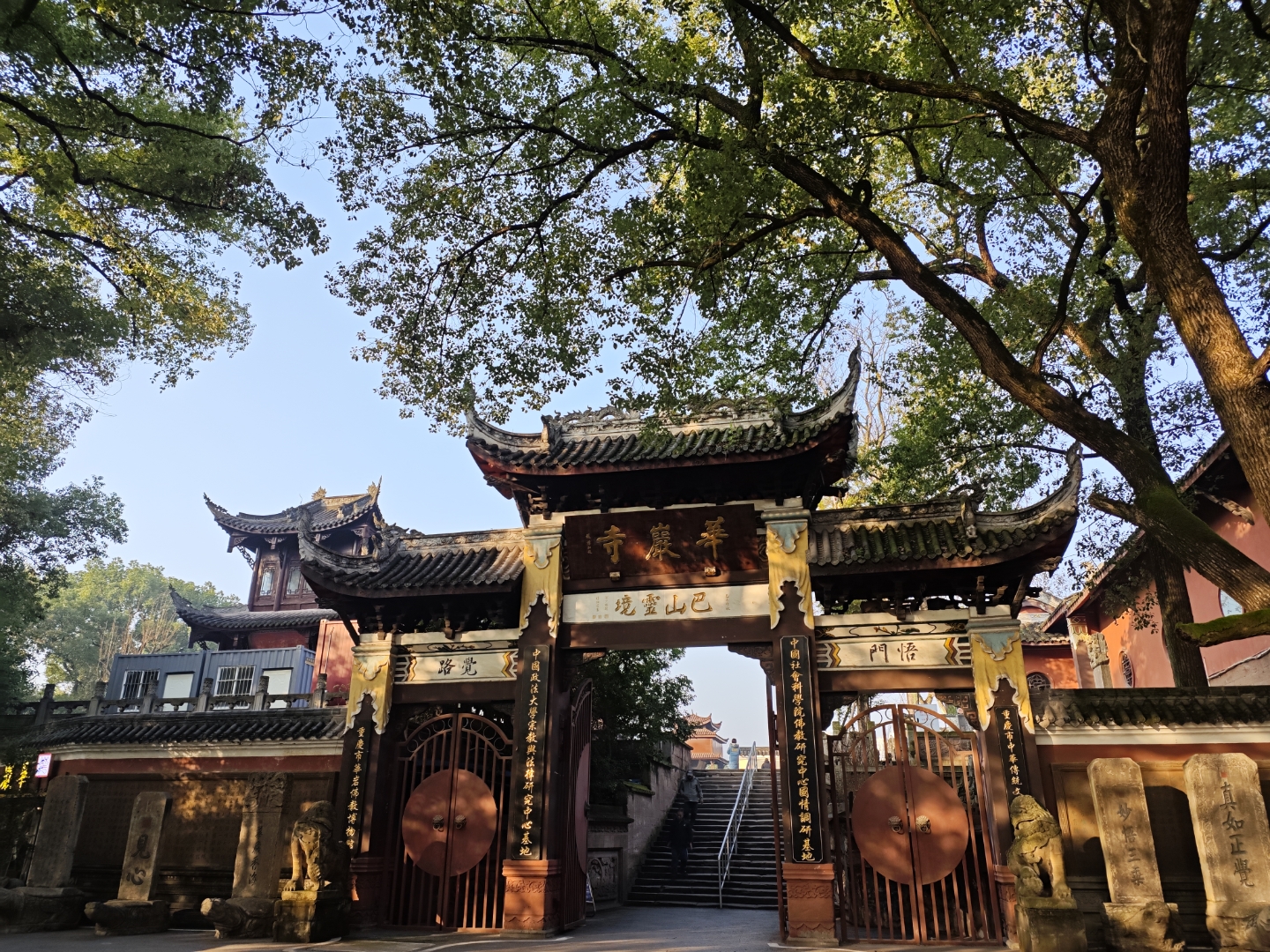
Huayan Temple
The Grand Hall and Buddha
The centerpiece of Huayan temple is the Great Hall, set high above the stone steps like a watchtower over a valley. It is dark inside, its air rich with incense and sunbeams break through the narrow windows to illuminate the giant golden Buddha. No matter which side you stand on, the peaceful smile of the statue seems directed exclusively at you.
The hall’s (will open in new tab) plan seems balanced but not overly strict. Rows of elaborate carved pillars frame the space with deep reds and gold paint. Murals around its walls tell Buddhist scripturmiseftures – by now, their colours are a little octavo drvier. When the monk starts chanting, the sound pours into the room. It mingles with the smell of sandalwood.
For these few moments you forget that the city is just kilometres away. It’s quiet, warm, and slow as if the Great Hall has its own weather. You will find yourself slowing down, too. It feels right not just because you have to but because it is right.
Pilgrimage Site and Local Devotion
On festival days, the Huayan temple feels alive in a different way. The courtyards fill early, with locals carrying bundles of incense thicker than their egos. Stalls outside sell lotus-shaped candles, each one glowing faintly even in daylight. The air smells of sandalwood and fried sesame cakes from the nearby vendors.
You might overhear an elderly woman saying she has been coming here since she was a little girl, or see young parents helping their children bow to the Buddha three times. Monks move slowly among daubed crowds, intoning Hwa-t'ou s in low voices that weave through the hall spondents onto the he thick and unctuous.
The devotion is not hurried. After prayers will linger a while, folks sitting under the pine trees or simply chatting near said pool so long as you walk slowly and address them like old friends – laughing with one another. It is both ritual and environment that, as long as ever, on life has passed without change remains unchanged in Chongqing Temple, so far south of my home is no exception to this rule.
Opening hours: open daily from 8:00 AM to 6:00 PM.
Getting there: about 23 km from the city center; you can take Bus 222 directly to the temple.
Ciyun Temple (慈云寺)– The Hidden Gem Few Tourists Visit
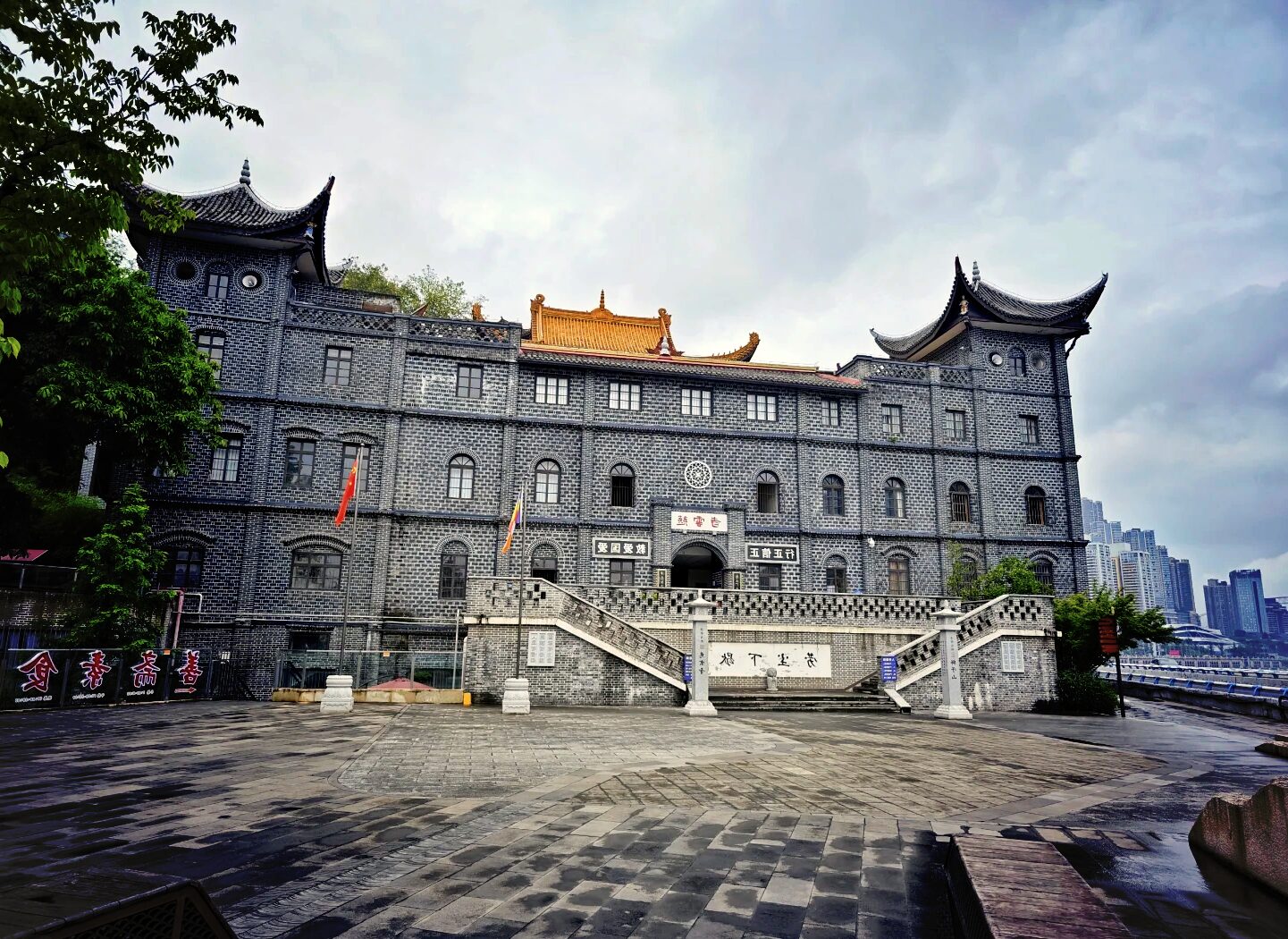
Ciyun Temple – A Blend of Chinese and Western Styles
Quiet Courtyards and Lotus Ponds
At the foot of Lion Mountain, Ciyun Temple looks out on Yangtze bending round a low drumbeat. Under this old white wall are courtyards. Although the leaves of ancient trees have started to move somewhat, they still throw spots of sunshine onto the stone path.
In summer, the lotus pond takes center stage. As the heat slowly opens the pink blossoms, their fragrance drifts across on an evanescent breeze. Carp under the large leaves wiggle about just below the water's surface and send ripples out towards the carved lotus sculpture in the middle of this. There you realise how this place is never really quiet: there is always a sound — water splashing, cicadas buzzing, ringing temple bells far away. It’s the film of hush that doesn’t shut the city out but rather lets it fade until all that is left is water moving slowly and air going by.
Ming Dynasty Origins and Cultural Relics
Though the site dates back to the Tang, the chongqing temple we see today carries strong Ming and Qing imprints. The original was a Guanyin temple, later expanded in 1927 into a rare combined monastery for monks and nuns. This blend of Eastern and Western elements—arched windows beside curved eaves—makes it unlike any other in the city.
Inside, five treasures stand out: a jade Buddha, a vajra pillar, a thousand-Buddha robe, ancient sutras, and a towering bodhi tree transplanted from India six decades ago. Beneath it, a pool holds a carved lotus where the figure of Prince Siddhartha stands, encircled by nine dragons spouting clear water—locals call it “Nine Dragons Bathing the Prince.”
These relics aren’t locked away behind glass. They live in the open air, weathered but alive, part of the daily rhythm of incense, bells, and passing footsteps.
A Place for Meditation and Tea
This temple in Chongqing is set some distance away from the main halls. In these rambling buildings there are small courtyards and corners where the noise fades to a murmur — a cranny holds a small tearoom with tables scraped smooth by years of use, the cool sound of leaves and faint sandalwood rising out from the corridor.
Having made themselves comfortable with a pot of local green tea, visitors sit there in the quiet, watching the steam rise and whirl toward the open window. Outside, the bodhi tree leaves a soft imprint on the floor. Once in a while a monk goes by — silently — smiling a slight smile. Only the sound of teacups clinking and the soft splash of the lotus bloom disturbed the peace.
It feels like time has come to a stop. Here tea is not just something to drink but also part of the meditation: along with the slow rhythm that matches your breath to that temple life itself.
Opening hours: 8:00 AM – 6:00 PM.
Bus route: Take bus No. 304 to Wuyuan Station, then walk for 10 minutes.
Practical Tips for Visiting Any Chongqing Temple
When visiting a Ciyun temple , dress with modesty in mind. Cover shoulders and knees, even in summer. Loose cotton shirts and light trousers work well for the city’s humidity. Hats should be removed before entering the main hall.
Incense is usually available at small stalls inside or just outside the gates. Locals often light three sticks, bow three times, then place them in the burner. Donation boxes sit near the altar; there’s no fixed amount, but small notes are common.
Move slowly, keep voices low, and avoid pointing directly at Buddha statues. If you meet a monk or nun, a polite nod or a quiet “阿弥陀佛” is enough—shaking hands is rare here. These small gestures keep your visit in harmony with the temple’s calm.
Still craving more spots in Chongqing? Landmarks like Hongya Cave and the Chongqing Art Museum are just the beginning—this city has countless surprises waiting for you.
Frequently Asked Questions (FAQs)
Q: Are there any vegetarian restaurants near Luohan Temple?
Yes, there are a few small vegetarian restaurants within a 5–10 minute walk from Luohan Temple. Many of them serve simple Buddhist-style meals like tofu dishes, vegetable noodles, and steamed buns. They tend to be affordable, usually under 30 RMB for a set meal. If you want something more elaborate, there are larger vegetarian restaurants in Jiefangbei, about 15 minutes away by taxi.
Q: Can I join the chanting ceremonies at Huayan Temple?
Visitors are usually welcome to observe chanting ceremonies at Huayan Temple, but participation depends on the occasion. On regular days, you can quietly sit at the back of the hall and listen. On special Buddhist festivals, the temple might allow you to join in lighting incense or following simple chants. It’s best to ask a monk or volunteer first so you know where to sit and how to follow along.
Q: Is there a dress code for visiting Ciyun Temple in summer?
Yes, modest clothing is required year-round. In summer, loose cotton shirts and light trousers are perfect for the heat and humidity. Avoid sleeveless tops, short skirts, or shorts above the knee. If you arrive wearing something too casual, some temples may offer scarves or shawls for covering up before entering the main halls.
Q: Are there English-speaking guides available at these temples?
Not all Chongqing temples have English-speaking guides on site. Luohan Temple, being more central, sometimes has volunteers who can speak basic English, especially during major festivals. For Huayan Temple and Ciyun Temple, you may need to arrange a private guide through a tour agency or bring a translation app to help with signs and explanations.
Q: Are donations at Chongqing temples mandatory?
No, donations are not mandatory at any of these temples. However, they are appreciated and help with maintenance costs. Most visitors drop a small amount—around 5–20 RMB—into the donation boxes near the altar. If you choose not to donate, a respectful bow before leaving the hall is still considered polite.
